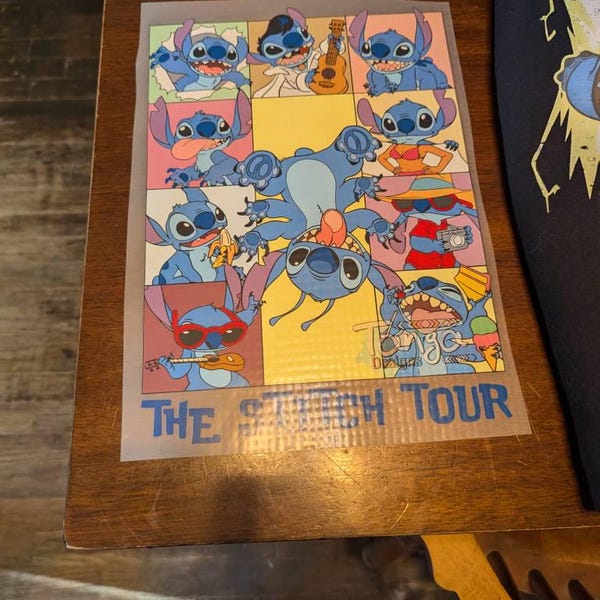Recently, the printing sector has seen an evolution driven by tech advancements, creativity, and the desire for personalized products. Among the innovations making waves is DTF transfers, a revolutionary method that is rapidly carving out its niche in the world of personalized printing. As businesses and customers alike seek top-notch, long-lasting, and versatile printing solutions, DTF transfers are emerging as a preferred choice for many applications in the market.
DTF transfers, or Direct to Film transfers, offer a distinctive approach that combines efficiency with exceptional print quality. This method allows for vibrant colors and intricate designs to be printed directly onto a special film, which can then be easily transferred onto a range of fabrics and surfaces. With a growing demand for customized products, DTF transfers present a strong option for entrepreneurs looking to break into or expand within the printing market, making it clear that they are set to redefine the landscape of personalized printing.
Understanding DTF Transfers
Direct to Film (DTF) transfers are an exciting printing technique that has been gaining wide popularity in the custom printing industry. The methodology involves applying designs on a special film using top-notch ink, which is then transferred to multiple substrates, such as clothing and textiles, via heat transfer methods. This technique allows for vivid colors and complex details, making it a preferred option among personalized apparel designers. DTF transfer technology has quickly established themselves as a feasible alternative to conventional screen printing and heat transfer vinyl methods.
One of the major advantages of DTF transfers is their versatility. Unlike traditional methods that may be limited to specific fabrics or colors, DTF methods can be used on a broad variety of materials, including cotton, polyester, and blends. This adaptability makes them perfect for a variety of applications, ranging from fashion apparel to promotional items. Furthermore, DTF applications allow for full-color prints without the need for multiple screens, streamlining the production process and minimizing costs for businesses.
Another appealing aspect of DTF technology is their longevity. The prints adhere securely to the fabric, ensuring that they can withstand washing and wear without fading or peeling. This durable quality is attractive to customers who want top-quality, durable designs on their garments. With these benefits, DTF transfers are poised to change the landscape of personalized printing, offering both creatives and consumers a dependable and efficient solution for their printing needs.
Advantages of DTF Transfers Compared to Traditional Methods

DTF printing offer exceptional flexibility compared to traditional methods. With Direct to Film printing, designs can be printed on a variety fabrics, including organic cotton, synthetics, and blends. This flexibility allows for a wider range of custom printing applications, from clothing to promotional items. Traditional methods like stencil printing often require unique inks and setups for various materials, making DTF a better choice for diverse projects.
Another notable advantage of DTF transfers is the level of quality of the prints. The brilliant colors and intricate designs produced by DTF technology stand out, providing a superior finish that rivals other techniques. This level of precision is particularly important for companies looking to create intricate designs or photographic prints. In contrast, traditional methods can occasionally struggle to achieve the same level of vibrancy and sharpness, especially on darker fabrics.
Cost-effectiveness is also a major benefit of DTF transfers. With reduced setup costs and a quicker production time, businesses can save on both work and resources. DTF transfers eliminate the need for several screens and extensive setup processes common of screen printing. This makes it an optimal choice for limited editions or custom orders that require speed without compromising quality, thus boosting the bottom line for graphic design businesses.
Future Trends in the Print Industry
As the printing industry evolves, DTF transfers are emerging as a leading technology that fits with market needs for personalization and quickness. dtf transfers to create colorful, very detailed images on various fabrics without significant setup time makes Direct-to-Film printing an ideal choice for companies striving to offer personalized products. This trend is also driven by consumer tastes for individual and customized items that reflect individual styles, which DTF transfers can easily accommodate.
Environmental responsibility is a further area where DTF transfers are making an impression. As environmental concerns become more important to consumers, print companies are seeking methods that minimize waste and reduce their environmental footprint. Direct-to-Film transfer technology generates less waste in comparison to traditional methods, as it facilitates exact prints with minimal material loss. This approach not only meets green-minded consumers but also enhances the reputation of companies committed to eco-friendly practices.
In addition to customization and sustainability, the rise of online commerce is reshaping the print landscape. With an increasing number of businesses moving to digital platforms, the requirement for on-demand printing options is dramatically increasing. DTF transfers fit perfectly into this model, providing rapid turnaround times and the capability to complete limited orders smoothly. This versatility permits companies to adapt swiftly to market trends and customer requests, guaranteeing they remain competitive in a rapidly changing market.
